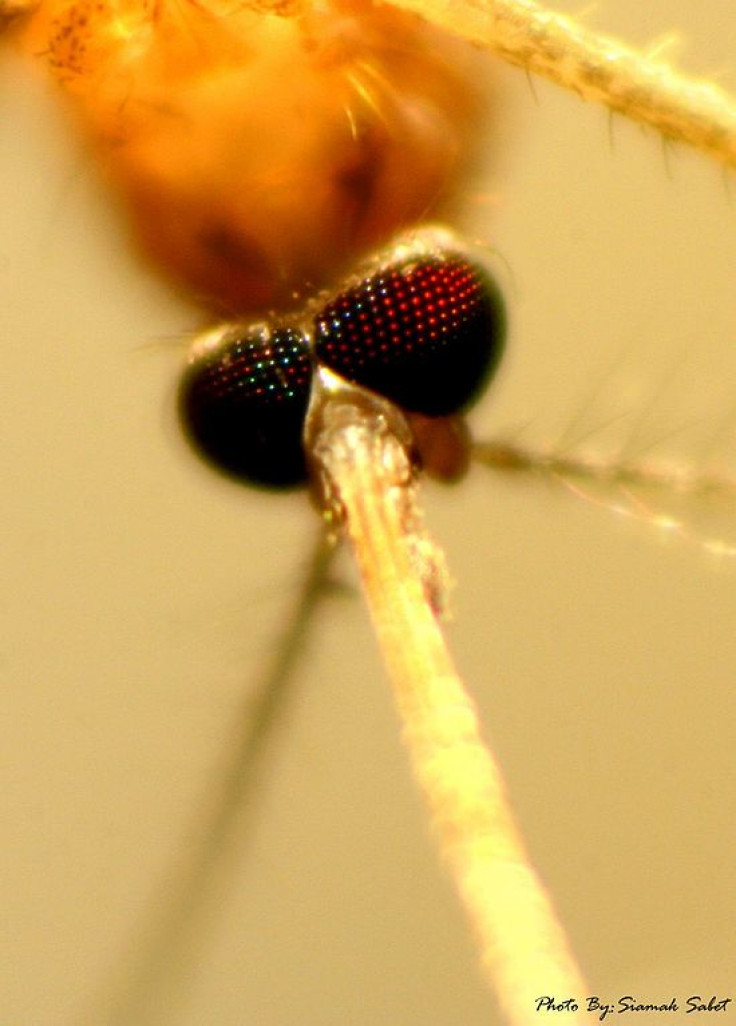Season Of The Itch: How To Avoid The Annoyances And Dangers Of Mosquitoes

Mosquito-borne diseases such as malaria, yellow fever, dengue, filariasis, and encephalitis (a swelling of the brain) kill millions of people worldwide every year. In the U.S., mosquitoes spread several types of encephalitis, including St. Louis encephalitis, Western Equine encephalitis, LaCrosse encephalitis, Japanese encephalitis, and Eastern Equine encephalitis, as well as West Nile virus, which can cause encephalitis in both animals and humans. In addition, they can transmit heartworm to common household pets and their attacks on farm animals can cause weight loss and decreased milk production.
"Infectious diseases are now spreading geographically much faster than at any time in history," said Margaret Chan, World Health Organization Director-General. The emergence and spread of West Nile Virus, for example, may be only the first of many exotic diseases imported due to increasing eco-tourism and international air travel. Malaria, rift valley fever, chikungunya virus, and dengue fever are but a plane flight away, and meanwhile the concerns of public health officials increase each year.
You, as Host
"Mosquito" is a Spanish or Portuguese word meaning "little fly." There are over 3,000 different species of mosquitoes throughout the world; currently 176 species are recognized in the U.S. Mosquito season starts in the spring, when warm weather brings out the first of the bugs, peaks in the summer, and tapers off in the fall in most places in the U.S., though there may be some activity year round in Hawaii and the south. Mosquitoes don't disappear for good until the first freeze, followed by temperatures consistently below 50 degrees.
According to the American Mosquito Control Association (AMCA), a scientific/educational association founded in 1935, mosquitoes find hosts in three ways: by sight (they observe movement), by detecting infra-red radiation emitted by warm bodies, and by chemical signals. In particular, they are attracted to carbon dioxide and lactic acid, among other chemicals, at distances of 25 to 35 meters (or 82 to 114 feet). Bigger people are often more attractive to mosquitoes because they are larger targets and they, along with active or fidgety people, produce more carbon dioxide and lactic acid. Women are usually more attractive to mosquitoes than men because of the difference in hormones produced by the sexes.
"While we cannot make mosquitoes completely disappear, we must be prepared to prevent their spread," said medical entomologist and AMCA technical adviser Joe Conlon. "This requires safe, effective, sustained mosquito control and awareness in the community."
The AMCA recommends that, if possible, you schedule activities to avoid the times when mosquitoes are most active - usually dawn and dusk. Those who are gothically inclined should note that dark clothing attracts mosquitoes; dressing in light, loose-fitting clothing is best. To prepare for mosquito season, AMCA is offering tips for practicing safe mosquito control this spring.
Three D's
Practice the three D's - Drain, Dress and Defend:
- Drain: Empty out water containers at least once per week.
- Dress: Wear long sleeves, long pants, and light-colored, loose-fitting clothing.
- Defend: Properly apply an approved repellent such as DEET (N, N-Diethyl-3-Methylbenzamide), picaridin, or oil of lemon-eucalyptus.
If you have a deck, the AMCA suggests lighting it with General Electric yellow "Bug Lights". Although not repellant, per se, they don't attract mosquitoes like other incandescent lights. Mosquitoes are relatively weak fliers, so placing a large fan on your deck can provide a low-tech solution. Citronella candles have a mild repellent effect, but do not offer significantly more protection than other candles producing smoke.
To make the areas around your house a mosquito-free zone, the AMCA recommends the following:
- Dispose of old tires, tin cans, flowerpots, buckets, unused plastic swimming pools, cemetery urns or other containers that collect and hold water - they can breed thousands of mosquitoes.
- Clear roof gutters of debris.
- Repair any leaky outdoor faucets.
- Change the water in bird baths at least once a week.
- Drill holes in the bottom of recycling containers to avoid water collection.
- Clean pet water dishes regularly.
- Check outdoor toys and empty them whenever rainwater collects there.
"A mosquito needs as little as a teaspoon of standing water to lay its eggs," said Conlon. "Places like rain gutters, old outdoor buckets, tree holes and empty flower pots make excellent spots for breeding."
Scientists at Work
Scientific investigators, specifically taxonomists, are constantly looking for new mosquitoes, as well as reviewing previously identified specimens for new information. Better microscopic equipment developed in the last 20 years has improved their ability to determine differences between species. In 2001, a new species, Anopheles grabhamii, was reported from the Florida Keys.
Since weather makes such a difference, mosquito activity can begin at different times each year as well as different times in the same year as some species become active before others. When the hot weather of summer arrives, mosquito season reaches its peak and they will pass through their life cycle faster: More will lay eggs and more eggs will hatch in the warmer temperatures. By the end of the summer, though, their population begins to decline. Those born earlier in the summer have gradually disappeared and fewer new eggs are hatching. Species go through their life cycles in anywhere from four days to one month.
The 'small fly,' fast breeding and ever-present, may pose a potential threat to your health and should not be underestimated. Yet, even a danger can provide inspiration. As Anita Roddick, human rights activist and founder of The Body Shop, once said: "If you think you're too small to have an impact, try going to bed with a mosquito in the room."
Source: Darsie RF Jr, Vlach JJ, Fussell EM. New addition to the mosquito fauna of United States, Anopheles grabhamii (Diptera: Culicidae). Journal of Medical Entomology. 2002.



























